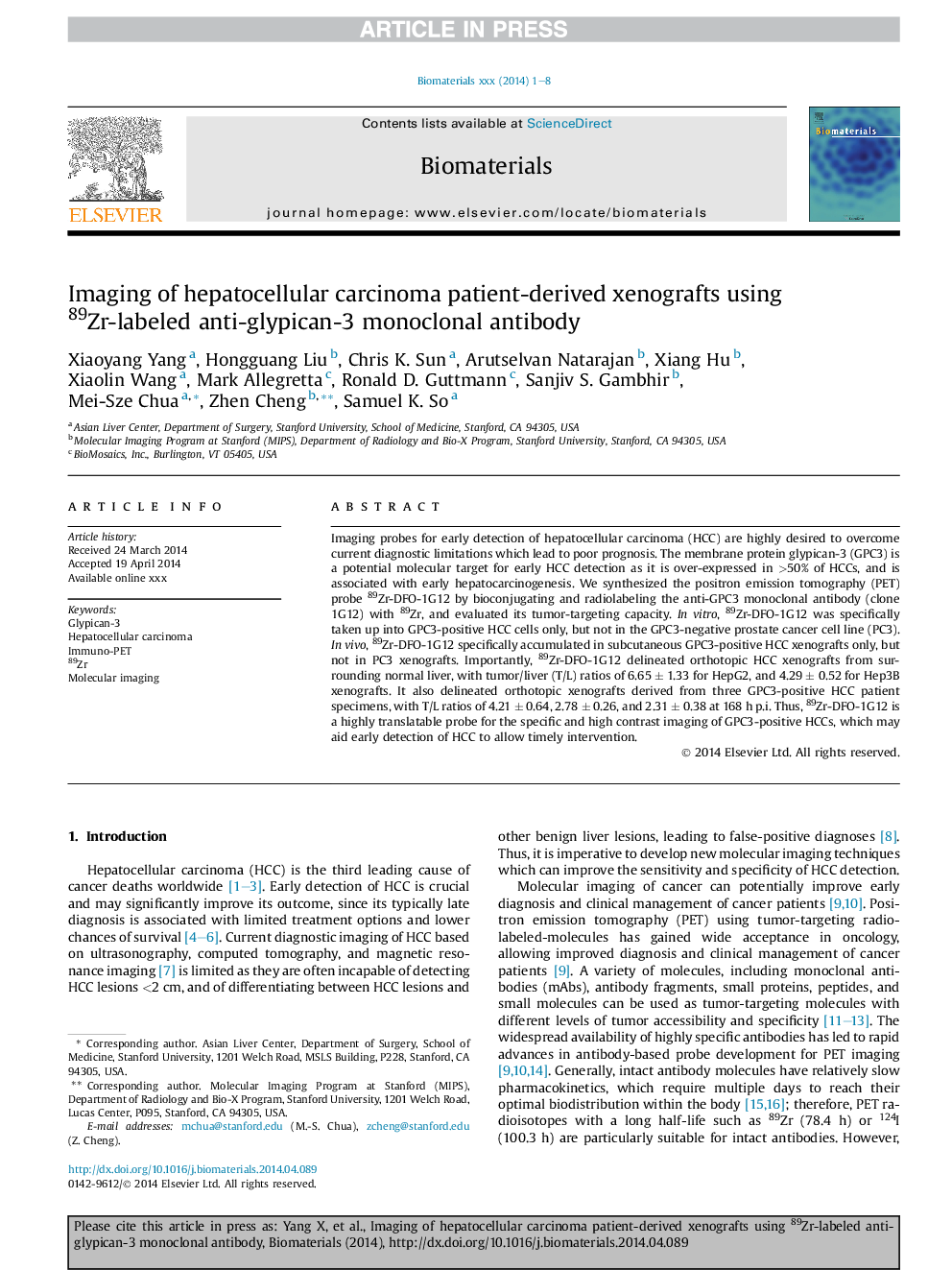| Article ID | Journal | Published Year | Pages | File Type |
|---|---|---|---|---|
| 10227541 | Biomaterials | 2014 | 8 Pages |
Abstract
Imaging probes for early detection of hepatocellular carcinoma (HCC) are highly desired to overcome current diagnostic limitations which lead to poor prognosis. The membrane protein glypican-3 (GPC3) is a potential molecular target for early HCC detection as it is over-expressed in >50% of HCCs, and is associated with early hepatocarcinogenesis. We synthesized the positron emission tomography (PET) probe 89Zr-DFO-1G12 by bioconjugating and radiolabeling the anti-GPC3 monoclonal antibody (clone 1G12) with 89Zr, and evaluated its tumor-targeting capacity. In vitro, 89Zr-DFO-1G12 was specifically taken up into GPC3-positive HCC cells only, but not in the GPC3-negative prostate cancer cell line (PC3). In vivo, 89Zr-DFO-1G12 specifically accumulated in subcutaneous GPC3-positive HCC xenografts only, but not in PC3 xenografts. Importantly, 89Zr-DFO-1G12 delineated orthotopic HCC xenografts from surrounding normal liver, with tumor/liver (T/L) ratios of 6.65 ± 1.33 for HepG2, and 4.29 ± 0.52 for Hep3B xenografts. It also delineated orthotopic xenografts derived from three GPC3-positive HCC patient specimens, with T/L ratios of 4.21 ± 0.64, 2.78 ± 0.26, and 2.31 ± 0.38 at 168 h p.i. Thus, 89Zr-DFO-1G12 is a highly translatable probe for the specific and high contrast imaging of GPC3-positive HCCs, which may aid early detection of HCC to allow timely intervention.
Related Topics
Physical Sciences and Engineering
Chemical Engineering
Bioengineering
Authors
Xiaoyang Yang, Hongguang Liu, Chris K. Sun, Arutselvan Natarajan, Xiang Hu, Xiaolin Wang, Mark Allegretta, Ronald D. Guttmann, Sanjiv S. Gambhir, Mei-Sze Chua, Zhen Cheng, Samuel K. So,
